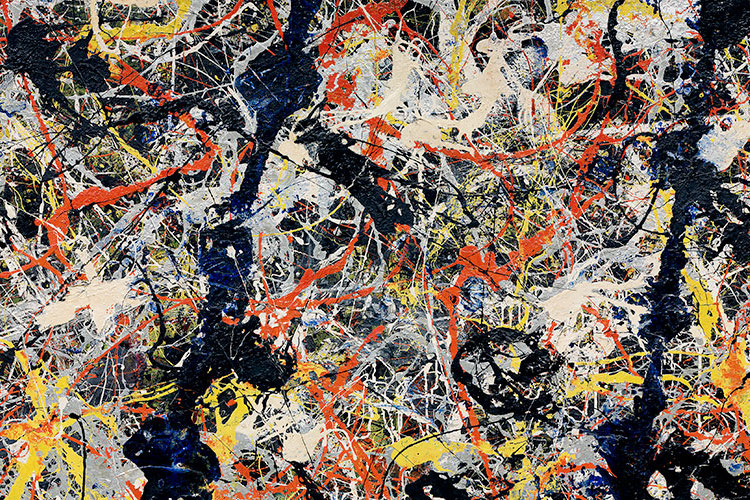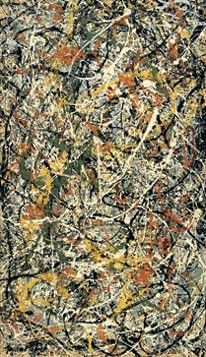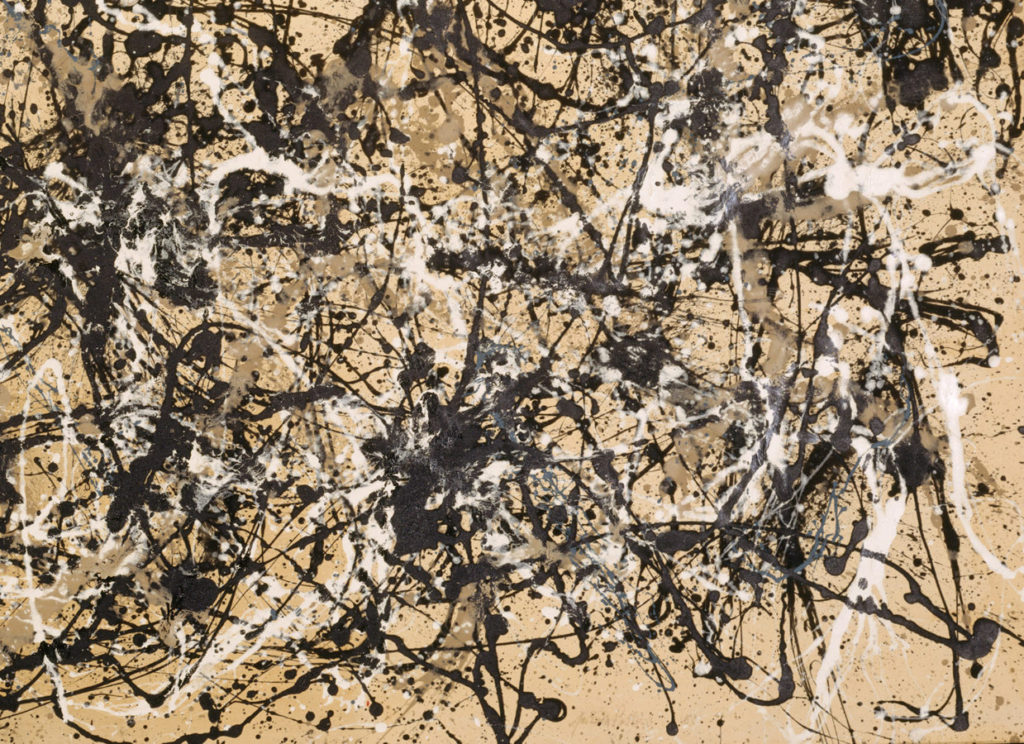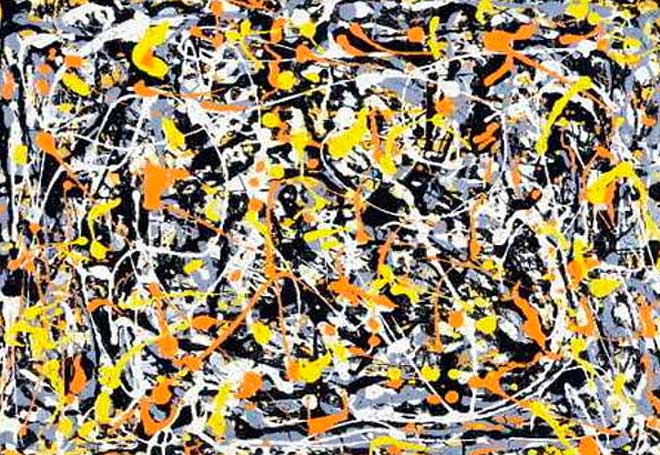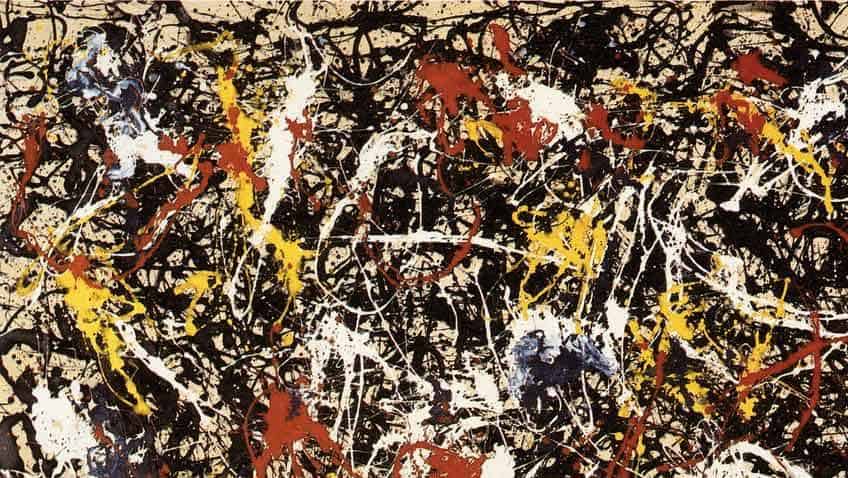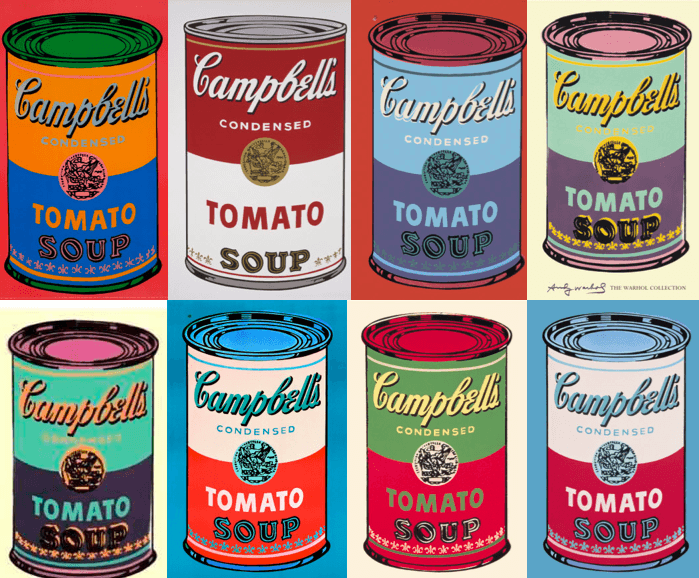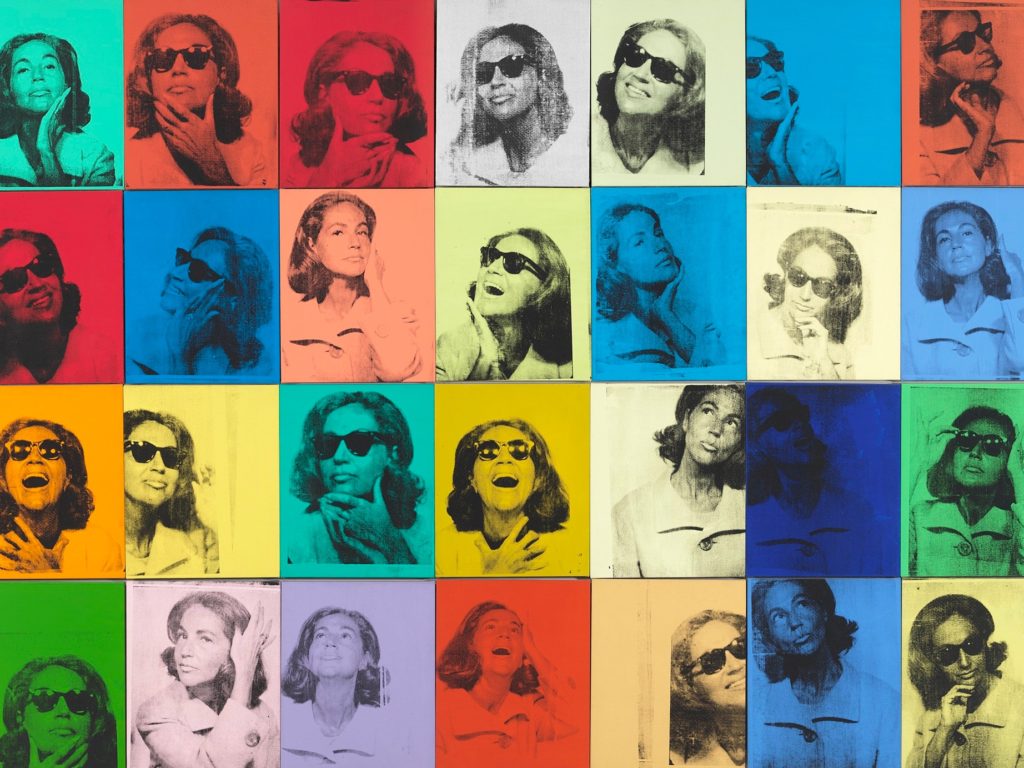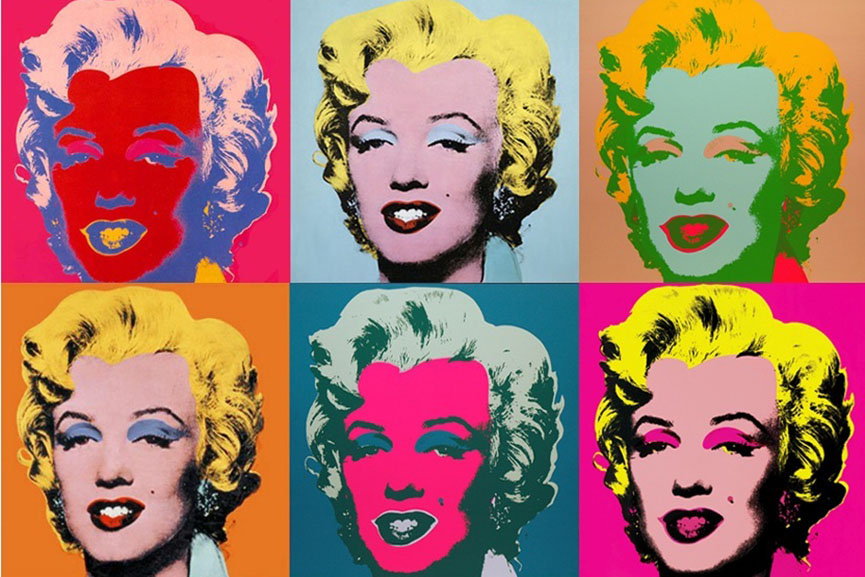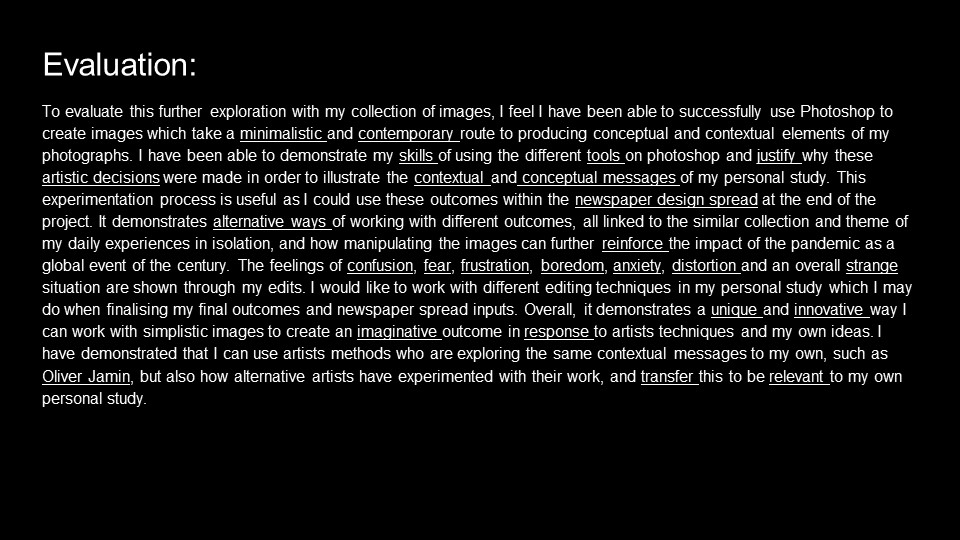In my personal investigation I am going to be exploring the life that my papa, Terry Batho, lived and documenting the legacy he left behind. I was ten years old when my papa died. I was close with both my gran parents but at that age I didn’t have the same sort of relationship with him than I would now. By looking into the life that my grandad lived and what kind of man he was, it gives me the opportunity to get to know him more and get a sense of closeness to him even though he has passed away. By speaking with my nan, my mum, my aunty and his close friends I can begin to paint a picture of the kind of man my grandad was. I can start to feel like I knew him and by speaking with his friends I can start to see the unique character that my papa had. I am going to be focusing on one of Terry’s biggest passion was Mini’s. He owned multiple over the years, buying them, fixing them and selling them. His garage has tools that he used to work on his cars, he also had specialist tools that were designed certain task to do with classic mini’s. He also had a very special car that was superior above all the rest. When his father died he used his inheritance money to by the millennium edition Mini Cooper S John Cooper works edition. This car was one of the small batch of Cooper S models that were the last of the classic British design to roll of the production line before BMW introduced the new shape mini in 2000. His legacy lives on and has influenced me. When he died in 2010, many members of the Jersey Mini Club did a drive by and an escort to the cemetery. My dad drove his special edition car in the escort with my uncle in the passenger seat and I sat in the back. I can vividly remember sitting on the red leather seats in the small back of the car. I thought to my self this is the coolest car I have ever been in, the metal dashboard and the cooper S details stood out to me and since that day I have always wanted one. And now I own one.
Monthly Archives: January 2021
Filters
ESSAY
HOW DO BOTH CORINNE DAY AND NAN GOLDIN CREATE A ‘DIRTY REALISM’ WITHIN THEIR PHOTOGRAPHY?
‘Dirty Realism is the fiction of a new generation of American authors. They write about the belly-side of contemporary life – a deserted husband, an unwed mother, a car thief, a pickpocket, a drug addict – but they write about it with a disturbing detachment, at times verging on comedy. Understated, ironic, sometimes savage, but insistently compassionate, these stories constitute a new voice in fiction.’ – Bill Buford.
The term ‘dirty realism’, coined by Bill Buford, formed the title of the Summer 1983 edition of the Granta magazine. Buford wrote an explanatory introduction at the beginning of Granta 8, to define this North American literary movement. This beautiful, honest movement not only spread through literature but through art and photography too. In 1986, Nan Goldin published ‘‘The Ballad of Sexual Dependency”, a deeply personal diary composed of 700 snapshot photographs, documenting her life. The protagonists of the book and the photographer herself are frozen within intimate moments of love, pain, ecstasy, sex, and drug use. The book itself is the definition of ‘Love and Rebellion’ and has deeply inspired me to create my own personal photo diary, including the people and things I love, but more importantly, focus on exploring the idea of dirty realism and intimacy in photography. A Photographer who, in the following decade, emerged in the grunge genre of photography is Corinne day; a highly skilled fashion photographer inspired by Nan Goldin. Corinne day created ‘diary’ a photographic book similar to The Ballad of Sexual Dependency. Both photographers use specific techniques in order to convey emotion and intimacy within their photos, techniques that I will uncover and analyze and use to lead my creative path. This category of photography really changed the way many photographers understood photography, and it strongly inspired later generations of photographers, including myself, to express very personal life experiences through an album of images.
DIRTY REALISM
The area of art that has particularly sparked my creative direction is an extremely honest side to reality. Dirty realism is ”a literary genre characterized by a spare, terse style that features struggling, working-class characters in sterile, bleak environments”. The writers of this subcategory of Realism, such as Angela Carter, Bobbie Ann Mason, Richard Ford, Tobias Wolff, seem to write about the more mundane aspects of life, the more ‘real’ aspects. As I explained earlier, the term ‘dirty realism’, was coined by Bill Buford and it formed the title of the Summer 1983 edition of the Granta magazine, which would define a new school of American writers and inspire the world of photography. After extensively researching this movement, I came across Charles Bukowski and Raymond Carver, the ‘Dirty Realism Duo’, credited as the fathers of the “Dirty Realism” genre during the 1980s. The duo’s intentions branched from the minimalism movement, a primarily American movement originating in New York City in the late 1960s. The movement was outlined by ‘the stripping of fiction down to the least amount of words and a concentration on the subject’s view of the object’.The characters inCharles Bukowski and Raymond Carver’s books are usually ordinary, everyday people – the lower or middle-class worker, the unemployed, the alcoholic, the addict, the beaten-down-by-life. Similar to the photography aspect of dirty realism, it was ‘characterized by extreme simplicity of form and a literal, objective approach. This approach was quickly introduced into the creative arts as a form of fashion photography, stemmed from the idea of being ‘real’, and incorporated movements like grunge, indie, and punk: ‘defiance of traditional norms and nihilism.’ photographers shot gritty and uncomfortable pictures during these fashion subcultures, involving over or undersized clothing.
NAN GOLDIN
Nan Goldin wrote “‘The Ballad of Sexual Dependency is the diary I let people read,’… ‘The diary is my form of control over my life. It allows me to obsessively record every detail. It enables me to remember.’”. This amazing photographer is extremely well known for her controversial yet earthy outlook on life itself, an outlook which to the vast majority of people, is undeniably true. Nancy Goldin was a part of that great number of people, whose lives entailed grief and chaos. Goldin talks about her family during her time growing up: ‘’My father, who was not always great with my mother, was critical…There was a lot of bickering going on, and I wished they’d get divorced most of my childhood.” She also explains that her mother was very possessive of her father at that time, who was more focused on his sons. A tragic moment is Nancy’s life is detailed in the introduction of The Ballad of Sexual Dependency. During the preface, she writes very honestly about the heartaching situation, and makes note so some of the political topics she explores withing her photoraphs; “I was eleven when my sister committed suicide,” and continues to write:
“This was in 1965, when teenage suicide was a taboo subject. I was very close to my sister and aware of some of the forces that led her to choose suicide. I saw the role that her sexuality and its repression played in her destruction. Because of the times, the early sixties, women who were angry and sexual were frightening, outside the range of acceptable behavior, beyond control. By the time she was eighteen, she saw that her only way to get out was to lie down on the tracks of the commuter train outside of Washington, D.C. It was an act of immense will.
In the week of mourning that followed, I was seduced by an older man. During this period of greatest pain and loss, I was simultaneously awakened to intense sexual excitement. In spite of the guilt I suffered, I was obsessed by my desire.”
Goldin, a famous American photographer in the dirty realism movement, regularly focussed on taboo subjects such as fetish, sex, homosexuality, drug addiction, and transvestism. Her most notable piece was composed of almost 700 snapshot-like images that produce a stunning and personal narrative of her life between the late 1970s, 1980s, around Boston, New York, Berlin, and more. During an interview in 1996, Goldin describes her meaning of snapshots: “People take them out of love, and they take them to remember – people, places, and times. They’re about creating a history by recording a history. And that’s exactly what my work is about.”The book itself was originally a film, and was developed with multiple live and improvised performances, while goldin flipped through the slides alongs with a beautiful soundtrack; from Maria Callas to The Velvet Underground. The Ballad of Sexual Dependency, released as a film in 1985, is presented in its original 35mm format, including photographs that also emerge as images in the slide show. Shortly after, during 1986, Nan released “The Ballad of Sexual Dependency” as a book. This was Goldin’s first book and remains her best known.
One well-known piece by her was a self-portrait of herself after being beaten by her husband: to ‘show her world without glamorization or glorification.’ This photograph in particular truly displays the mundane reality of life itself, the alcoholic, the abuser, the victim, etc. Some of her images could even need viewer discretion due to their exposing nature of abuse. The photographs themselves were often blurred or gritty, which created a very authentic and ‘everyday’ grunge and dirty shot. When Nan was a young adult, the controversies around gay rights and the ‘LGBTQ community’ were still up in the air and not completely accepted. This makes Goldin’s work that little more questionable.
CORINNE DAY
Corinne Day, a very similar artist to Nan Goldin, is the main inspiration for my project, the stunning photographer uses her photography to document her everyday life, displaying the intimacy and love in her circle of friends and family. Day was born in 1965, and was a self-taught fashion photographer who was one of the first to introduce a new documentary look to photography, a formation of both candid and intimate images. Corinne Day’s style of photography is often put in the ‘dirty realism’ genre. Corinne has always been a massive admirer of Nan Goldin’s work, and it clearly shows in her most known work “Corinne Day Diary”. In her autobiography she states: “I met Nan there and to my astonishment and delight Nan had been an admirer of my work since the early Kate photographs. I first discovered Nan’s work in New York in 1992 when I was there meeting with Barney’s department store. Ronnie Cook took me to a photography book store and the first book I picked up was The Ballad of Sexual Dependency. At this time I had no knowledge of art photography, only what I had seen in commercial magazines. I had already been conveying my own personal experiences through my photography in magazines. I wanted the ordinary person to see real life in those pages. I found Nan Goldin’s and Larry Clark’s work liberating and their work also validated the way I had started to take photographs myself.
Corinne Day has been the main inspiration for my project, the stunning photographer uses her photography to document her everyday life, displaying the intimacy and love in her circle of friends and family. Corinne Day’s style of photography is often put in the ‘dirty realism’ genre; “a literary genre characterised by a spare, terse style that features struggling, working-class characters in sterile, bleak environments”. Her images are ‘real’, and display immense personal events and emotions. Before Corinne passed away she created a beautiful and personal book called “Corinne Day Diary”. The title ‘Diary’ is a very important aspect of the book, it simply explains what the book itself is; a diary of Corinne Day. The title of the book is written in what seems like Corinne’s handwriting, underneath a photograph of Tara’s face. Tara also seems to be a main character in Corinne’s life, a very close friend, and an important figure. Even though the photographer of the book is Corinne Day, there are images of herself which may have been taken by Tara (one of the main faces in the diary). One can only assume that Corinne made the photographic diary to remember all of the events in her life, but I think it was also to produce photographs in a ‘grunge’ and ‘dirty realistic’ style. I think the book was really for herself before she passed following the diagnosis of a brain tumour in 1996, but also for her close friends and family, hence the book name ‘diary’. “The series draws comparison with artists such as Nan Goldin and Larry Clark, who also live what they photograph. Like them, Day is curious about people who pursue experiences beyond the norm.”
Diary is cold and melancholy, it archives young lives with uncompromising realism in the form of photographs, so we as the viewers feel encompassed in the visual and not just the worded description. The books genre is clearly dirty realism and Grunge. At other times, the photos are joyful and celebrate friendship. Day clearly shares her life with the lives of her close friends, and decides to share experiences like hospitalisation, partying, drugs. Clearly, her best friend Tara is a main character in the diary, we follow her though partying, sexual liaisons, illness and finally, motherhood. However, whether in the photograph or not, she is always emotionally present in her photographs. In the image above, one of Corinne’s friends, Tara is seen crying at home, told by the caption below the image. What makes the book even more authentic is her handwriting that accompanies each image, describing a short story that will only be memorable to her.
I have been lucky enough to see the book and feel it by hand. There are many different things about the book that have inspired me, but also made the book personal and authentic. The images are all placed in the same orientation on each page, and there is one photograph per page, as well as this, there are no double page spreads, but rather only one image to represent an event. Some photos aren’t of people, but they are aesthetically pleasing. There are no fold- outs or inserts in the book either, this makes the book very uniform and organised, a juxtaposition to the crazy, frantic life Corinne was having in the photos. A narrative is constructed by the captions under each image, even though the images are not in chronological order. The captions are short and seem to be written in Corinne’s handwriting, making it very personal. She tells a story through jumbled photographs, however the captions seem to make sense, and really feel like a diary. What I really enjoy about Corinne’s book, is that all the images are ‘real’ there is no acting or posing, all the images are taken freely, as if they are core memories in Corinne’s mind. This is what really makes Corinne Day part of the Dirty realism genre of photography.
When comparing Corinne day and Nan Golding, There are very clear similarities between the two people, and the books they’ve created. Within their images they clearly perform to the qualities of the Dirty realism genre with how they show their hectic and honest lives through their images. Their personal and raw captions and images really do make it seem like the viewer is looking through the photographer’s diary. The editing processes both artists make truly display how the atmosphere and characters were feeling, whether the photographer was crying in hospital or had been beaten by their husband. I have truly taken inspiration from these beautiful dairies.
BIBLIOGRAPHY
- https://www.corinneday.co.uk/autobiography/
- om/artists/nan-goldin/
- https://www.tate.org.uk/art/artists/nan-goldin-2649
- https://www.moma.org/artists/7532
- https://www.mariangoodman.com/artists/44-nan-goldin/
- https://thephotographersgallery.org.uk/whats-on/exhibition/corinne-day-diary
- https://www.npg.org.uk/collections/search/person/mp88351/corinne-day
Essay plan
Possible essay question:
- What constitutes a ‘real’ image?
- How do Robert Capa and Paul M Smith use ‘fake’ / controversial imagery to emphasize the effects of war and masculinity?
Artists:
- Robert Capa
- Paul M Smith
Plan:
- Essay question: What constitutes a ‘real’ image?
- Opening quote:
- Introduction (250-500 words):
There are multiple criteria required to consider a photograph as ‘real’, does the subject within the image exist or is it imagined, is the photo artificially created or genuine? However, there is an ongoing debate surrounding the way in which we prove and define a subject, moment, or whole image as ‘existing’. Realism, in the arts, is considered the accurate, detailed, and unembellished depiction of nature or contemporary life. This is where Robert Capa’s picture of ‘The Falling Soldier’ or ‘Death of a Loyalist Militiaman’ comes under deep controversy. This image is known to depict the very instant a loyalist militia man, from the Spanish Civil War, 1936, was fatally shot and began to collapse into death. The debate over the authenticity of Capa’s image comes under four main themes: Realism, Representation, Ethics and Truth. As said by Richard Whelan in This is War! “The Falling Soldier is neither black nor white. It is neither a photograph of a man pretending to have been shot, nor an image made during what we would normally consider the heat of battle” A brief synopsis of ‘The Falling Soldier’ would show that there are many different theories in relation to the legitimacy of the image and it’s creation, however, in truth there will never be a clear answer to its legitimacy as only Capa and the men involved in the creation of the image know its full authenticity. Due to the amount of information collected to either prove or disprove this photos originality and the lack of a clear answer, the attention has been taken away from the photographs true meaning. This raises another dispute of whether it matters at all if the image is ‘real’ as stated by Susan Bright in Is It Real? “… reality is perhaps not the most important issue when making a statement about the role of representation in warfare.”
- What is your area study? Realism
- Which artists will you be analysing and why? Robert Capa and the controversy surrounding his image of the death of a loyalist militia man. Paul M Smith and his Pastiche of Capa’s work.
- How will you be responding to their work and essay question? I will explore the realism, representation, ethics and truth of the artists and their work.
- Pg 1 (500 words):
- Historical/ theoretical context within art, photography and visual culture relevant to your area of study. Make links to art movements/ isms and some of the methods employed by critics and historian.
- Pg 2 (500 words): Analyse first artist/photographer in relation to your essay question. Present and evaluate your own images and responses.
- Pg 3 (500 words): Analyse second artist/photographer in relation to your essay question. Present and evaluate your own images and responses.
- Conclusion (250-500 words): Draw parallels, explore differences/ similarities between artists/photographers and that of your own work that you have produced
- Bibliography: List all relevant sources used
Artist references
Richard Billingham
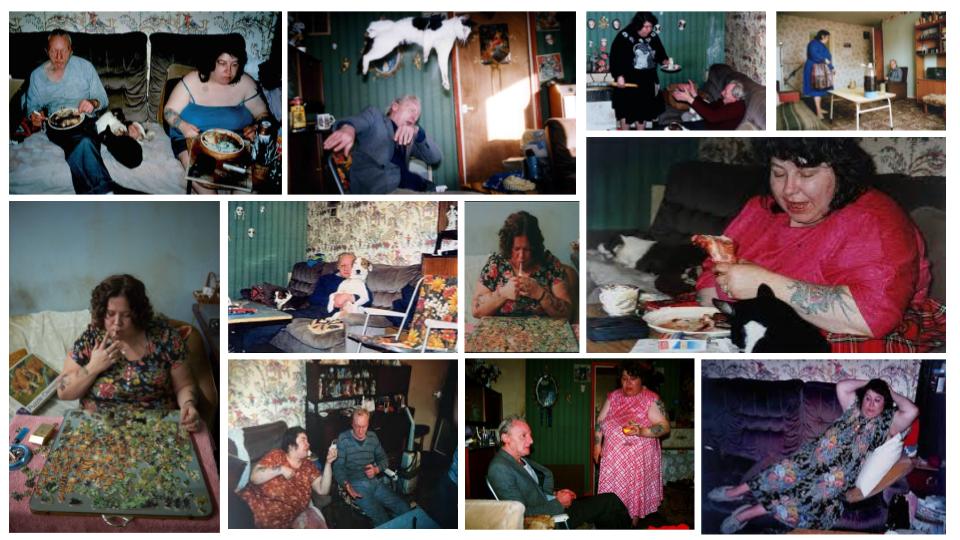
I chose Richard Billingham as one of my artists because his ideas and methods are similar to what I want to do; filming, almost exposing the inside life of my own family. He takes a documentary approach to his work which is what I’d like to achieve. His work also fits into the theme of Rebellion – since his Father was an alcoholic and his Mother was an angry lady with heavy tattoos, however this wasn’t exactly intentional.
He is an English Photographer, artist, filmmaker and art teacher. He is best known for his photography book (Ray’s A Laugh 1996), which documents the life of his alcoholic father, Ray and his obese, heavily tattooed mother, Liz. He’s also made a number of short films for example Fish tank (1998), which again surrounds his parents and exposes what goes on behind the scenes. He then went on to release his first feature film, Ray and Liz (2018). His work originally sprouted from when he aspired to be a painter, and was originally using the images he took as guidelines for his paintings, however, a tutor at Billingham’s art degree course fell upon these images and thought they were different and unique.
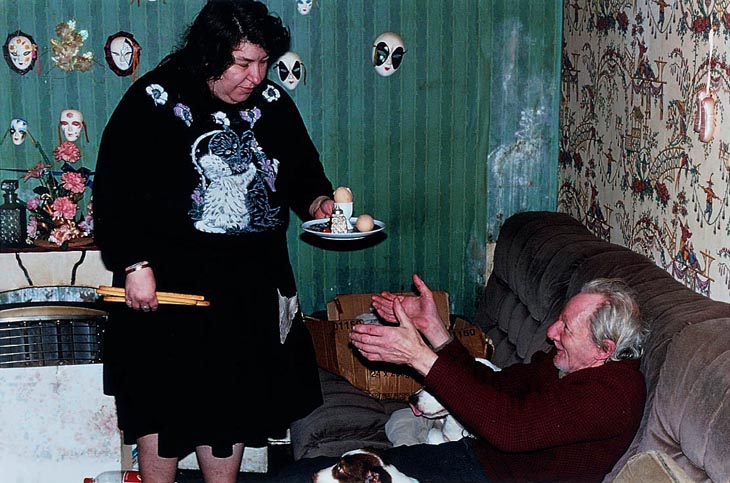
Billingham stated “I realised that if I photograph the whole room on a wide angle lens, you’re showing people everything, whereas if you focus on details then the viewer pieces together what that room looks like. It’s much more engaging – the viewer has to work to fill in the gaps, so I think it can be more engaging that way.” – This gives me some inspiration for the visuals of my film, instead of focusing on a big picture, grab details and smaller aspects of an area to intrigue the viewer. Here are a couple of interview based articles with Billingham:
https://thequietus.com/articles/26164-ray-liz-richard-billingham-interview
https://www.theguardian.com/film/2019/feb/23/richard-billingham-ray-and-liz-interview
PHOTO ANALYSIS
TECHNICAL: Looking at the image above, it is clear that Billingham uses natural lighting, nothing has been set up in order to achieve a specific type of lighting. However it does appear that there is a fluorescent/artificial lighting involved, most probably from the flash on the disposable camera that he used to take the photographs. In his films, he also appears to use natural lighting and no type of flash or artificial lighting has been used in order to achieve a certain type of lighting. Since he was using a disposable camera, the average shutter speed is about 1/100, allowing not much light in, however again, there is a flash. Disposable cameras also have a fixed mode of operation concerning the lens focus, aperture and shutter speed).
VISUAL: No filters or colour adjustments were used within Billingham’s images. Therefore, the colours in his images are natural and true to real life. The tones of his images are overall quite dark, especially when the pictures were taken during the night, however the tone does lighten when the images are taken during daytime. There is no specific composition when it comes to his photographs, as I have mentioned he takes a documentary approach to his work therefore there is no set up and takes images as things are happening right in front of him. This is the same for his films, there is no set up or composition, he simply let’s things flow naturally.
CONTEXTUAL AND CONCEPTUAL: As mentioned, Billingham wasn’t immediately set out to be a photographer, but instead, an artist. However when his tutor saw the photographs he realised that they were intriguing and had potential. His images and films were a portrayal of the poverty and deprivation in which he grew up in Cradley Heath, a town in Birmingham.

The area appears to be quite run down, middle to lower class area. He documented his parents mostly. His Mother being an overweight, tattooed chain smoker and his father being an alcoholic. His upbringing then may have been quite unique and different, compared to others he may have knew with ‘normal’ parents that lived without any addictions etc and lived within the middle to upper class areas. He may have felt many personal struggles when it came to his upbringing and expressed this through photography. Billingham has stated that he ‘just hated growing up in that tower block’. The reason why his images became so popular was because his pictures were surreal, claustrophobic and gave meaning to the idea of “too close to home”. It is not often you get to see someone essentially exposing their every day life and what the go through and have to deal with. As humans we have this inquisitive nature and wonder what happens behind closed doors. After making images, and them having a successful response, Billingham went on to make short films such as Fishtank and eventually a feature film named Ray & Liz. Overall going through major events that happened in his own life such as, when he was 10 years old and the family problems spiraled after Ray lost his job as a factory machinist.
It has been said that Billingham is protective and dismissive of the impacts that his childhood and upbringing has had on him. Instead of processing the hard times, he frames it – and out of that he did get successful, however he has said that “Jason often says to me now that, statistically, we should either be in prison, or dead.”. Richard Billingham most definitely turned a bad thing into a good thing. Which is the place that I am coming from when it comes to making my movie. My Mum does suffer from a terminal illness and things do get hard sometimes however exposing the inside to my life may bring some realization to some people and remind people that everyone has things going on behind closed doors.
Here’s a link to one of Billigham’s epiosode’s of ‘Fishtank’:
Meaning and Methods
Since I am making a film, I would like to focus on Billinghams’s filmmaking when it comes to talking about his meaning and methods. In the second clip I’ve inserted he says that the images he took ‘just happened by themselves’ and he wanted to experiment and see how things would look if he filmed the situations that he was living through. He wanted to explore a new medium to see if the same ‘magic’ would happen that appeared in his photographs. He also stated that with videos, he was looking for a ‘good catch’ and that he wanted to portray the emotions that were being expressed through a video.
He filmed most of his videos on a hand held camera and simply documented what he saw. His focus wasn’t necessarily on techniques but on capturing certain moments in order to create a hard hitting, close to home film. This is what’s good about documentary photography, it’s often non-fictional and true to real life which makes it somewhat more intriguing. He considers his photography ‘accidental artwork’ as he didn’t intend from the start to even be a photographer, but an artist. Billingham goes on to state in the interview that I have linked below that he didn’t want a polished aesthetic – he just wanted to make his images and films very moving emotionally.
Richard Billingham | Photoworks
From all the research it is clear that Richard Billingham’s meanings and methods are similar to what I would like to achieve. I’m not looking to make a technical, studio film, I’m wanting to make a hard-hitting, true to real life documentary film that captures certain struggles in my life, specifically surrounding my Mum, just as Billingham did with his parents. He has definitely inspired me with his short films and it goes to show that things don’t necessarily have to be the most visually pleasing or have a direct story for them to be a success.
Laia Abril
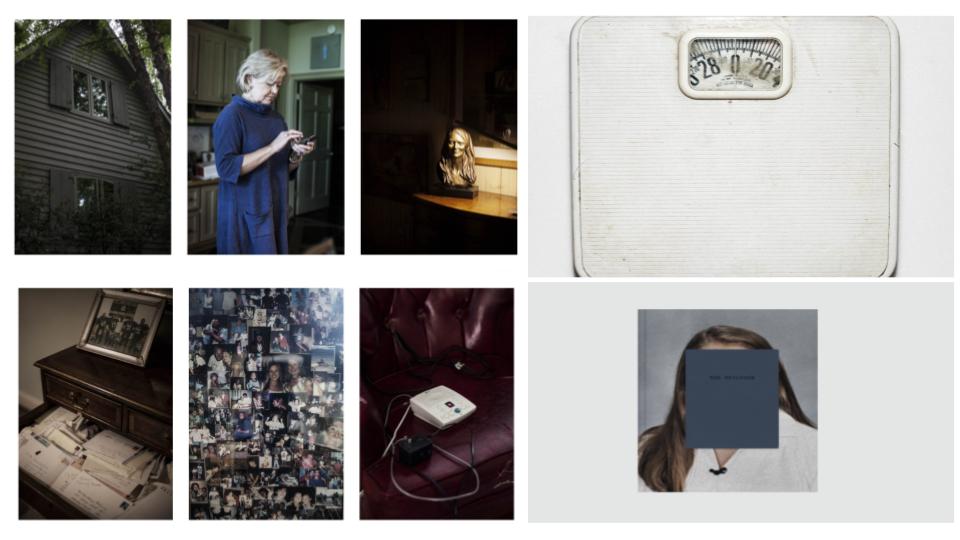
Laia Abril is a research-based artist working with photography, text, video and sound. She typically enjoys telling intimate stories that raise uneasy and hidden realities related with sexuality, eating disorders and gender equality. The Epilogue is a story of the Robinson Family and the aftermath in losing their 26 year old daughter to bulimia. She worked closely with the Robinson family and and reconstructed Cammy’s life through memories and flashbacks shown through the family’s grieving process. The Epilogue is about Cammy’s absence as well as her omnipresence; her energy and willfulness, her struggle with her disorder that truncated her life and capsized the lives of those around her. The book shares a range of dilemmas and the frustration that came with Cammy’s disorder, the guilt and the sorrow, all blended together in the bittersweet act of remembering their most troubles loved one.
Although Abril’s technique is different (she has photographed and created a photobook whereas I’m making a film) I feel like her concept and the elements she has pictured represents greatly of the feel I would like my film to be. For example, she is not directly photographing Cammy, because she has passed, but has photographed elements of Cammy’s life that all refer to her illness and troubled life. This is a technique that I would like to include in my film; not directly filming my Mother all of the time however incorporating certain elements like her medicine, doctors notes, my siblings etc that are all to do with her illness and struggles of every day life. I feel as though this gives a more intriguing feel to photography and film and allows the audience to make connections between the illness and various other thing’s in the person’s life.
She also tends to use archives of Cammy and the family from when she was alive; apparently happier times that strikes a great juxtaposition in the recent photographs that she has taken. This is something that I may experiment with to create some hard hitting juxtapositions within my own films – showing the difference in the past and how things have changed since my Mum fell ill.

CONCEPTUAL&CONTEXTUAL: This image is of Cammy’s mother. As I mentioned, Abril tends to use archives that show happier times that involved Cammy. Visually, this image is very sad and mundane and juxtaposes the old images greatly showing a huge difference in mood and family connection. Her mother appears very dull and worn out – showing the affects Cammy’s death has had on her. The photograph is essentially conveying a range of emotions which was Abril’s aim when it came to making this project. It shows remembrance, sadness and somewhat moving on. The image is very simple, however it makes you wonder all the things going round in the Mother’s head, that is also revealed throughout the book; ‘Where did it all go wrong?’, ‘Was she really unhappy?’, ‘What could we have done differently?’. As I have been saying a lot within my personal project, sometimes pictures and films do not have to be visually complex or pleasing, the meaning and covert messages that are at bay, are often more hard hitting than the visuals themselves. Again, this is something I want to achieve also.
4th photoshoot
Primary and Secondary papers / objects

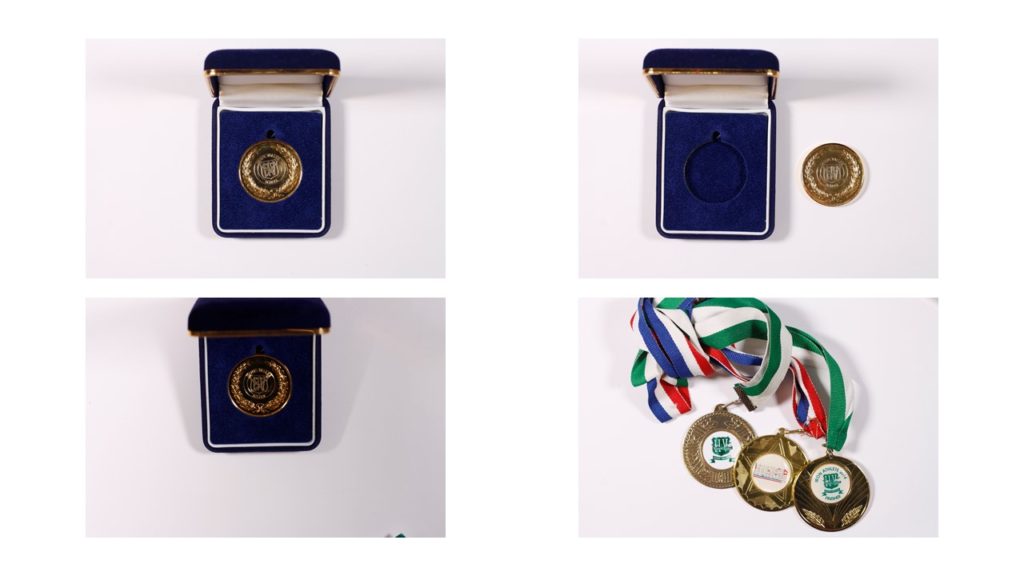


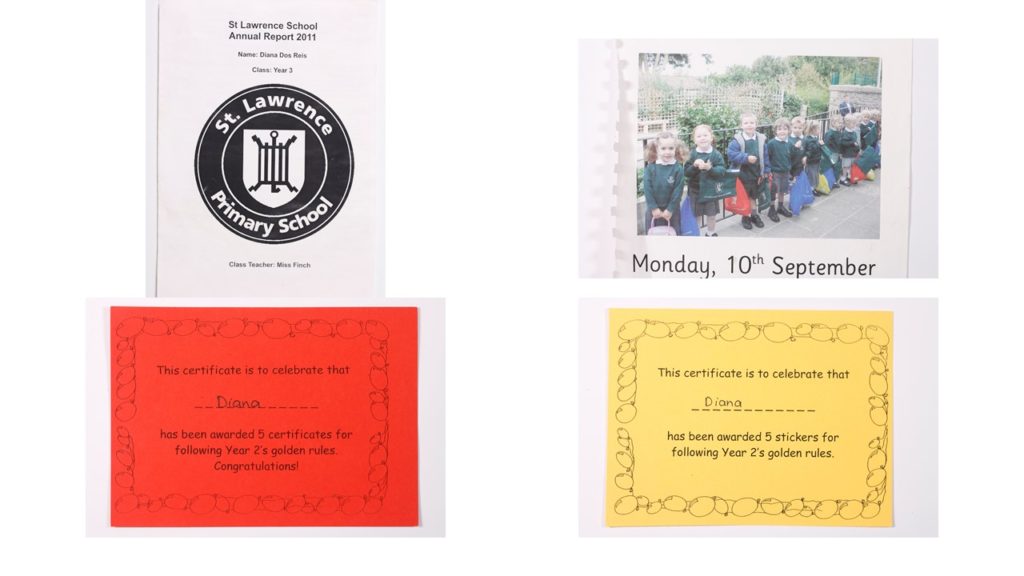
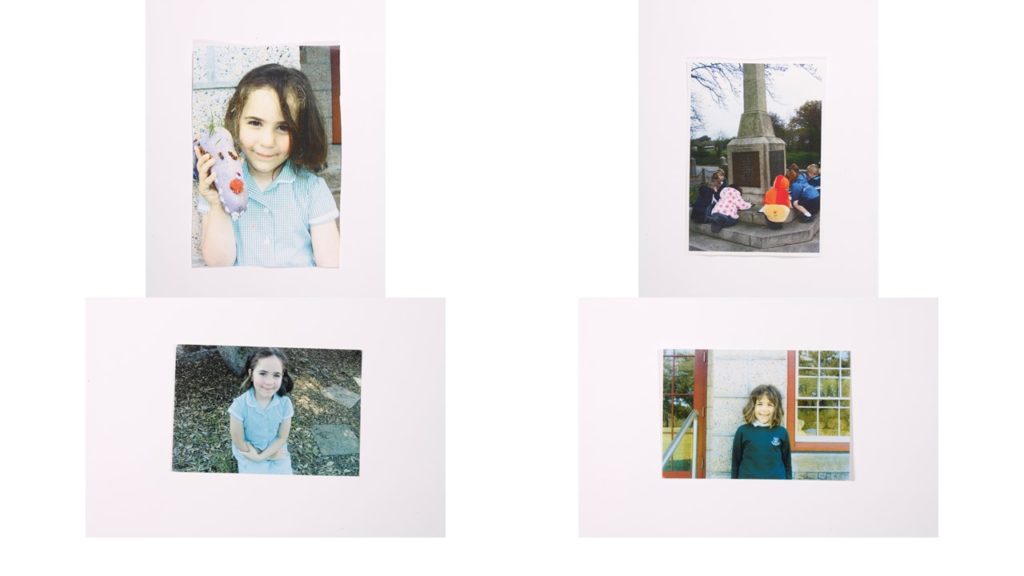
THIRD ESSAY DRAFT
essay – a working progress
my essay question : in what way is identity and autobiography expressed in the work of cindy sherman and jen davis?
“I am trying to make other people recognize something of themselves rather than me.”
introduction – Both this essay and my creative project is all about documenting, whether it be how I feel about myself and how my chosen photographers, Jen Davis and Cindy Sherman, reflect on their own personal experiences, both emotional and physical. The essay is going to delve into how both the photographers explore their identity and autobiography in their photographic work. My creative project will include self-portraits, landscapes, portraits and objects, to hopefully portray things about myself and my life. Jen Davis work shows a journey of self-discovery and portrays her feelings toward her looks. Our subject matters don’t align specifically, but there are some similarities, such as we both have taken self-portraits that show how we feel about ourselves. Cindy Sherman’s work is mainly role play, challenging gender stereotypes ; she dresses up as different types of people and poses for the camera, with a nod to cinematic scene portrayal. This is a kind of tableau, with carefully chosen locations, backdrops and props. However in an article she does explain that she does sometimes see herself in her images.
paragraph one: The photographers that I am studying in detail, Jen Davis and Cindy Sherman, both explore identity and autobiography in their work, however they both use different genres of photography to do this. Cindy Sherman’s work relates to the post-modernism genre, as she doesn’t hide where she gets her inspiration for her work from but instead, she genuinely mocks it. All of her images have a ridiculing element to them, whether it maybe through her makeup, clothing or ridiculous props that are featured in her images. Her images literally poke fun at what society expects women to look like. The post-modernism genre was first seen in the 20th century, when architects criticised the style of the modernist architecture for being too formal, austere and functional. Post-modernist photographers, including Barbara Kruger, Corrine Day and Hannah Starkey, use their work to build on the themes and conceptual ideas that began during the modernist period. [include images from Barbara Kruger, Corrine Day and Hannah Starkey] A quote I found aligns directly with what Sherman wanted to do with her photography, “postmodern thinking led to a radical shift in the way that the body was presented and understood”, in the sense that her work has changed how viewers look at the female body. Jen Davis work relates to realism, even though her images are reconstructed, she hopes to document her own issues with her body and relationships and intimate fantasies with men.
Realism came about in the 1940’s and aimed to provide an accurate representation of the real world, real problems, real life. The images, relating to realism were made to look more like photographs than art and were a reaction to pictorialism. Artists that are known in the realism genre, are Paul Strand, Dorothea Lange and Jacob Riis. I found a quote that relates to Jen Davis photography work, “photographers have produced large bodies of work consisting of frank and intimate portraits and self-portraits that explore the gritty, bohemian lives of those around them and act as important documentation of the times they capture”, in the sense that the images that Jen Davis took over the span of 11 years investigated many aspects of her life, that wouldn’t have probably been explored without this project.
paragraph two – Jen Davis investigates identity and autobiography in her photographic project, Eleven Years, where she produced a large amount of beautiful self-portraits, using natural light and strong compositions, over the span of 11 years. In the project Davis images portray the ideas beauty, sense of identity and her struggles with her body image. In an article on [insert name] Jen Davis describes the idea of ‘Eleven Years’ was to ” invite the viewer into the past eleven years of my private life, exploring the vulnerabilities… body, feelings of isolation, the battle to recognise beauty, a quest for intimacy, and sense of acceptance through the camera’s eye”. To me ‘Eleven Years’ does just that, it does allow the viewer to understand who Jen Davis really is, what she internally struggles with, and tells a story of her journey of change. As you flick through the photo book that she produced, her story starts to unravel before your eyes and it is clear that the person in the photo in the first image is not the same in the last image, but a different, more established version of Jen Davis. Davis cleverly describes how she personally feels about beauty and what she has captured within her images, “I couldn’t necessarily identify with the idea of someone seeing me as ‘beautiful,’ but I could accept that the pictures that I created and inhabited were.” [insert where I found this quote from] Essentially what Davis feels is that she cannot be beautiful but the images that she took were, is that because she could carefully compose them and enhance things that real life shows? Or was it because she felt she could truly be herself in front of camera? Why didn’t she feel beautiful? [insert picture] This image is may relate to the way Davis feels about herself and lack of self-confidence. The light in this image is natural, which seeps through a gap and allows some light to shine on the face, illuminating the features. This aspect is truly beautiful and idyllic. Jen Davis employs compositional and lighting techniques that are reminiscent of The Dutch Masters. The Dutch Masters used and painted light in a very clever way, by featuring windows in their paintings. By adding these elements they illuminated the main element of the image. Jen Davis has done this multiple times throughout her book, projecting light onto herself. Did she do this to illuminate other things? To illuminate how the way she feels about herself contrasts with the way society views her. A question that is created by this image is one of, what is she thinking about? What is running through her mind during this image was being taken? Is she thinking about how she feels about herself? Is she reflecting on how she felt during a part of her life? This aspect is unknown to the viewer but is what makes the image so powerful. This aspect is under the interpretation of the viewer and the viewer only. During my creative process I have taken many self-portraits and struggled to look back at them. It’s an interesting and weird feeling seeing yourself as if you were one of your friends looking at you. The criticism I felt towards myself was shocking. In an article [add name], Jen Davis describes how she felt during her creative process, “It was like I was taking self-portraits,” she says, “except I wasn’t in them.”, it’s fascinating to think how Davis and myself feel so detached from the portraits of our own self, even though it is clearly us, as we know what we look like. Maybe it’s because we have our own perspective of ourselves and so does everyone else, but the self-portraits show us how we are seen in the world, reality. This quote from Davis creates the interesting question of does she lack identity? Or does she just lack the confidence to see herself within an image she took. Jen Davis work relates clearly to autobiography, not just because she tells her own story but because she investigates real and unconventional struggles of the life she lives.
paragraph three – Cindy Sherman cleverly investigates identity and autobiography in her work, which consists of hundreds of self-portraits where she dresses up in different outfits, puts strange make up and wears extravagant wigs, to alter her person to become a different one to portray different characters and story lines. These portrays explore identity and gender, and were made to intentionally mock how society expects women to dress, act and be. In the project, Complete Untitled Film Stills, where she created film-like stills by dressing up as different characters from mid-20th-century B movies and photographed herself in various locations. These images quickly became very popular and were used to spark up conversations on feminism, postmodernism and representation. In an article [insert name] Sherman described how she felt during her childhood. She was the youngest child and felt, in order to gain the attention of her family she would have to be different, and she achieved this by dressing up and changing her appearance. She made a clever statement in the article which I feel explains her intentions of all of her projects, “if you don’t like me this way, how do you like me this way?”. On the surface her images may not seem like they are about herself, but maybe if you look deeper, they are, maybe she enjoys changing her appearance, identity, herself entirely, even it is just for a photograph, for a split second. Is dressing up a part of an act of escapism for Sherman, but the question is what, what is she escaping? [insert image] The colours that are incorporated in this image are garish and bright, and don’t really complement each other, but clash. The background is almost over powering of the face within the image, was this the purpose? It brings about the question of what relevance does it have to the face that Sherman has portrayed. The lines within the background lead the viewers eye towards the face in the image. Overall, this image has a high level of composition. Who is Cindy Sherman trying to be here? Someone who likes to look pretty and glamorous? However, she seems to be mocking them, as the makeup is over the top and excessive. So, does she pretend to be different people to almost try and gain attention from people to make up for the lack of recognition from her family. During her childhood Sherman was obsessed with her appearance, and enjoyed to wear makeup, so does this image relate to her past self, and maybe she is mocking who she was? Her film stills were left untitled, and a critique to her work stated [insert name], “All the photos are untitled – another way of distancing herself from the images.” But why did she want to do this? Was it because secretly the images were about herself and did depict who she really was? In another article Sherman describes how she feels now about her own photographs, “I am a little more comfortable now in letting parts of myself show through.”, does this now mean that she is part of the photographs and they are intentionally about her, or still does she still have a detachment from them and herself within them. A quote from an article describes exactly how I feel about Shermans work, “through the use of their bodies, artists constantly question what it means to be human”.
conclusion – Although this project is solely inspired by Jen Davis and Cindy Sherman, I have explored some differences during the progression of my project. All of our work is based on identity ;who we are and who we are not, who we strive to be and our internal monologue/autobiography. However, my work has become very abstract and some of the images are centred around things I love. The work I have produced have abstract meanings and when some people look at what I done may not understand what I am trying to portray and to be honest some of the things don’t even really make sense to myself. Like what is life, what is love, what is rebellion? Where does love come from? Why do we rebel? How have I rebelled, or have even I rebelled at all? My work itself is an act of rebellion. By taking pictures of things of I shouldn’t and when I shouldn’t, I have essentially rebelled. My work is also an act of love. By taking pictures in order to learn more about myself, and to document things, places, feelings and people I love. The similarities between mine and Cindy Shermans work is that by taking self-portraits we have explored who we are, and use make up to explore ourselves. After an in-depth study of Cindy Shermans work it is apparent that her images are made to show different characters and not herself. The differences between mine and Cindy Shermans work is that she intends to change her identity by dressing up and looking different. Does she dress up as people she wants to be and regrets not being? Her whole project is solely self-portraits that portray and mock societies views on women and how they should look, act and what they should become. We have seen this in the earlier work of Claude Cahun too ; body image, gender roles and stereotypes are pushed and pulled around. The viewer is left to make concious decisions about what it is they are seeing. The similarities between mine and Jen Davis work is that by taking self-portraits we have explored the idea of beauty, both within ourselves and others, and learnt things about ourselves. The differences between mine and Jen Davis work is the solely took self-portraits and looked in detail into her fantasies and how she yearns for intimacy. Over the span of 11 years Davis explored the relationships she had had and included many of them in her work. Overall, the photographers that I have studied have inspired my creative processes but have also allowed myself to explore different ideas too.
theory: literary sources
In this folder here you can find texts to read in relation to a number of subjects and themes below. Some of these files are too large to upload to the blog here so go to the folder below.
M:\Departments\Photography\Students\NOSTALGIA\Contextual Studies\READING
Photography
Histories > Identities > Codes > Meaning
Barthes, R. (1984) Camera Lucida. London: Flamingo
Benjamin, W. (1936) ‘The Work of Art in an Age of Mechanical Reproduction’ in Hannah Arendt (ed) (1973) Illuminations. London: Fontana
Documentary
Realism > Representation > Ethics
A short PPT on Documentary Photography
Sontag, Susan (1977) ‘In Plato’s cave’ in On Photography. London: Penguin Books
Sontag, Susan (1977) ‘Through a Glass Darkly’ in On Photography. London: Penguin Books ch 2
Here some helpful resources on Sontag: On Photography from PhotoPedagogy
Rosler, Martha (1981) ‘In, around, and afterthoughts (on documentary photography)’ in Stallabras Julian (2013) Documentary. Cambridge (MA): The MIT Press.
Here is an introduction to John Tagg: A Burden of Representation (1998). Minnesota: University of Minnesota Press from PhotoPedagogy
Bate, David (2016) ‘The Art of the Document’ in Art Photography. London: Tate Gallerie
How documentary photography now is considered within a fine-art context
Max Pinckers Interview: On Speculative Documentary
How fact and fiction today in documentary photography is blurred
Solomon-Godeau, Abigail (1994), ‘Inside/ Out’ in Photography At The Dock: Essays on Photographic History, Institutions, and Practices. Minnesota: University of Minnesota Press
Here some helpful resources on ethical questions regarding the photographer’s position of being inside or outside from PhotoPedagogy
Photography and truth
Photography and Truth – see blog post with many resources.
Bright, Susan (2019) Is it Real? in Photography Decoded.
See more short essays here in Photography Decoded
Photojournalism: Truth, Representation, Propaganda, Aesthetics
Richard Billingham
Richard Billingham: Ray’s A Laugh – a photographer who worked on the inside documenting his parents life and relationship.
Documentary film: Fish Tank based on his book and parents relationship
Feature film: Ray & Liz
Interview in The Guardian and The Observer by Tim Adams (2019)
Larry Sultan
a Review in the Guardian Newspaper.
https://www.theguardian.com/books/2017/may/02/larry-sultan-pictures-from-home-review
Tableaux Photography
Pictorialism > Narrative > Cinema
A short PPT on Tableaux Photography
Bate, David (2016) ‘Pictorual Turn’ in Art Photography. London: Tate Galleries.
How Tableaux has been influenced by Pictorialism
Aesthetic Theory
Beauty > Sublimity > Judgement
Read Greek philosopher Plato’s thesis on Beauty
https://plato.stanford.edu/entries/beauty/
https://plato.stanford.edu/entries/plato-aesthetics/
Snapshot Photography
Vernacular photography
Photography and Feminism
Gender Studies > Male/Female Gaze > Self-portraiture
Mulvey, Laura (1973) ‘Visual Pleasure and Narrative Cinema’ in Screen (1975)
Judith Butler is an academic and writer who is an authority on feminism and gender studies, incl queer theory. Her seminal book is: Gender Trouble which we do have a copy of in the Library LRC and in Media. Here is a good overview of her work – make sure you read it all and watch video as well.
Kotz, L. (1998) ‘”Aesthetics” of Intimacy’ in Bright, D. (1998) The Passionate Camera: Photography and bodies of desire. London: Routledge
Healy, C. M. (2023) Girlhood, London: Tate Enterprises Ltd.
Rudd, N. (2021), The Self-Portrait. London: Thames & Hudson.
– too large a file to be uploaded to blog – find text here:
M:\Radio\Departments\Photography\Students\NOSTALGIA\Contextual Studies\READING
Photography and Portraiture
Robert Mapplethorpe: The Male Gaze – in pictures. The Guardian
Amelia Jones The “Eternal Return”: Self-Portrait Photography as Technology of Embodiment
Cindy Sherman
Paoli, J. Deconstruction Woman: The works of Cindy Sherman
Cain, Abigail, A Brief History of Cindy Sherman and Feminism
Owen, Samantha Rosemary (2014) Gender and Vision Through the Lens of Cindy Sherman and the Pictures Generation. University of Vermont
Lots of interviews and video and with Cindy Sherman on MOMA
Have a look at Shannon’s O’Donnells work here and when she was an A-level student?
Francesca Woodman
Townsend, C. (2006) Francesca Woodman: Scattered in Space and Time. London: Phaidon Press Limited.
– too large a file to be uploaded to blog – find text here:
M:\Radio\Departments\Photography\Students\NOSTALGIA\Contextual Studies\READING
Online texts
https://lareviewofbooks.org/article/an-hourglass-figure-on-photographer-francesca-woodman/
Thematic Essay about Francesca Woodman
Have a look at an essay and research by previous student, Francesca Hogan
Jo Spence and Photo-therapy
Dennett, Terry (2008): Jo Spence’s camera therapy: personal therapeutic photography as a response to adversity
Heath, Charlene (2017). Work, Politics, Survival, British Journal of Photography
Weiser, Judy (2005) Remembering Jo Spence: A Brief Personal and Professional Memoir… PhotoTherapy Centre
Jansen, Charlotte (2020) Is Photography An Effective Form of Therapy? Elephant
Dennett, T. (2013). ‘Jo Spence’s Family Album’ in Family Politics, Issue 20. Brighton: Photoworks
Photography and Surrealism – influence of Freudian psychoanalysis
Bull, S. (2009) Photography. London: Routledge
Surrealism Art Movement: A Window into the Mind
Surrealism and Psychoanalysis – Smarthistory
One photographer’s surrealist impression of mental illness
Photography and Memory
Kuhn, ‘A. Remembrance: The Child I Never Was’ in Wells L. (ed) (2003) The Photography Reader. London: Routledge
Here are a few articles and photobooks on Photography and its relationship with memory. You should read them and references them in your essay.
Colberg, J (May 28, 2012) Photography and Memory
blogger on Conscientious
Frames of Mind: Photography, Memory and Identity
by Anwandter, Patricia Marcella
In Frames of Mind, I have sought to explore the themes concerning the dynamic construction of memory. What do we choose to remember and how do we reinforce it? Who are we in relationship to who we were? Working with a collection of over five hundred images accumulated throughout my life, I have reinvestigated the images and their interrelationship with one another
A Matter of Memory: Photographs as Objects in the Digital Age
An exhibition at George Eastman House
A review on British Journal of Photography
Barthes, R (1982) Camera Lucida, London: Jonathan Cape
Overview of Barthes book Camera Lucida in Photo Pedagogy
The first half of this article talks about Barthes theory of a studium and punctum. The latter part about a photograph of his dead mother which allows him to think about memory.
Commentary on Barthes book
Rereading: Camera Lucida by Roland Barthes
Article by Brian Dillon in the Guardian, 26 March 2011
Grieving for his mother, Roland Barthes looked for her in old photos – and wrote a curious, moving book that became one of the most influential studies of photography
DEATH IN THE PHOTOGRAPH – critical article in response to Roland Barthes seminal book ‘Camera Lucida’ reflecting on photography.
Photography and Narrative
Family / childhood Photography
Kuhn, A. ‘Remembrance: The Child I Never Was’ in Wells, L. (ed) (2003) The Photography Reader. London: Routledge
Hirsch, Marianne, Family Frames: Photography, Narrative and Postmemory. Cambridge, Massachusetts: Harvard University Press. Read Introduction: Family Frames
Howarth, S. (2016) ‘Is My Family Normal?’ in Family Photography Now. London: Thames & Hudson.
McLaren, S. (2016), ‘Thanks for Sharing!’, in Family Photography Now. London: Thames & Hudson
Williams, V. (2013). ‘Who’s Looking at the Family, Now’ in Family Politics, Issue 20. Brighton: Photoworks.
All three texts above are too large a file to be uploaded to blog – find text here: M:\Radio\Departments\Photography\Students\NOSTALGIA\Contextual Studies\READING
Jim Goldberg
A Completely True Work of Fiction: Jim Goldberg’s Raised By Wolves (Magnum website)
Fingerprint: Tracing the Roots of Jim Goldberg’s Raised by Wolves (Magnum website)
Photography and Archives / Narratives / Memory
Landscape
Romanticism/ Sublime > Modernism/beauty >
Post-modernism/ New Topographics
Colin Pantall Landscape, Power and Climate Change
Landscape as Photograph and Photograph as Landscape: The New Topographies
Author(s): SHELLEY ARMITAGE
Source: Southwest Review , AUTUMN 1989, Vol. 74, No. 4 (AUTUMN 1989), pp. 422-465
Adams, R (1996), Beauty in Photography, New York: Aperture
Read chapter one of same name
J. M. W. Turner’s painting: Snow Storm Steam Boat of Harbour’s Mouth https://www.tate.org.uk/art/artworks/turner-snow-storm-steam-boat-off-a-harbours-mouth-n00530
https://www.tate.org.uk/art/art-terms/s/sublime
Youtube on Burke/ Sublime:
https://youtu.be/BvzG_p_sdOQ
This article picks out key elements of Burke’s theory of the Sublime and also includes an analysis of painting by Casper David Friedrich: https://natureofwriting.com/courses/literary-theory-1/lessons/edmund-burke/topic/the-sublime/
Photography and Typology
Bernd & Hilla Becher > studies of types
Typlogies: Bernd & Hilla Becher – part 1
Typlogies: Bernd & Hilla Becher – part 2
August Sander: National Portrait Gallery
Find files here: M:\Radio\Departments\Photography\Students\NOSTALGIA\Contextual Studies\READING\Typology
August Sander: Face of Our Time
Photography and anthropology
enhtnography > colonialism
Ethnography and Photography: What Kind of Collaborations for What Kind of Communications?
Bull, S (2009), ‘Classification by Observation: Anthropology and Colonialism’ in Photography. London: Routledge
Edwards, E. (1992), Anthropology & Photography 1860-1920. New Haven and London: Yale University Press.
Warner Marien, M. (2006), ‘Photography and the Social Sciences’ in Photography: A Cultural History. London: Lawrence King Publishing
Sealy, M. (2019), Docolonising the Camera: Photography in Racial Time. Chawell Heath: Lawrence and Wishart Ltd.
Find all three texts above here: M:\Radio\Departments\Photography\Students\ISLANDNESS\Contextual Studies\reading
Photography and speed
> early movement in photography
Making Modernism: Muybridge and Marey, Photoworks
Marey and Chronophotography
https://www.artforum.com/print/197607/marey-and-chronophotography-37960
Landscape in Motion: Muybridge and the Origins of Chronophotography Author(s): Dimitrios Latsis
Source: Film History , Vol. 27, No. 3 (2015), pp. 1-40
Published by: Indiana University Press
https://www.jstor.org/stable/10.2979/filmhistory.27.3.1
Frizot, M (1998), A New History of Photography. Cologne: Könemann. Read Ch 14: Speed of Photography
Warner Marien, M. (2002) Photography: A Cultural History. London: Lawrence King. Read chapter Science and Photography: The photography and Movement (pg 212-217)
MODERNISM and post MODERNISM
MODERNISM
Time period: 18th century – 1950s
Key characteristics/ conventions : Modernism was a broad movement encompassing all the avant-garde isms of the first half of the 20th century. Although different modern-isms were often incompatible (and occasionally antagonistic) they all rejected the dominance of older movements such as Classicism, Naturalism, and Academicism in favour of new experimental ways of producing art. Early modernity is characterised intellectually by a belief that science could save the world and that, through reason, a foundation of universal truths could be established. The common trend was to seek answers to fundamental questions about the nature of art and human experience. Modernity imbue all aspects of society and are apparent in its cultural forms including fiction, architecture, painting, popular culture, photography. the age of enlightenment late 18th century, moving away from religious beliefs and god and moving into the more scientific aspects of things. This included a range of ideas centred on the sovereignty of reason and the evidence of the senses as the primary sources of knowledge and advanced ideals such as liberty, progress, toleration, fraternity, constitutional government and separation of church and state. the perfectibility of human nature. by the 19th century the enlightenment was reaffirmed by artists . to examine the impediments that were holing humanity back. free humanity from historical baggage. Modernism makes references to things inside the art work itself e.g. form, composition, medium, material, skills, techniques, process. When looking into the aspects if art, modernism holds a belief in the individual genius of the artist, a desire for originality, a thirst fro the new, and reverence for the precious and a unique art object. Modernism is concerned with object rather than subject and form rather than content, creator rather than spectator.
Artists associated:
Alberto Giacometti
Of all the artists working in Paris in the 20th century, Giacometti was the great enthusiast of plaster. He worked away at it with his knife, often subjecting it to so much pressure that it finally crumbled away, forming the rubbish observed by Genet. When he was happy with it, he painted it. The original Women of Venice exhibited at the Venice Biennale in 1956 were plaster figures with black and brown lines etched on to their faces and bodies, making them resemble the women in his paintings.
Now the Giacometti Foundation in Paris has found new methods of restoring his plaster sculptures, many of which were damaged by being broken apart and covered in orange shellac to be cast in bronze. The Women of Venice, whose painted surfaces have been revealed, can once again be exhibited as they were at the Biennale, rather than as bronzes. And they will make their first appearance at a major retrospective opening at Tate Modern in London next month. This will be Giacometti’s first Tate show since a retrospective in 1965, when the sculptor worked away in a basement, perfecting the works that he was never quite prepared to declare finished. It will be his first major exhibition in London for a decade.
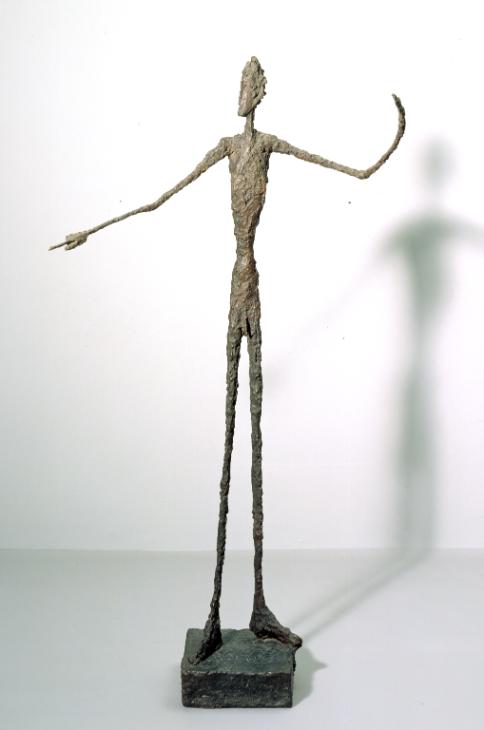
Man Pointing 1947 Alberto Giacometti 1901-1966 


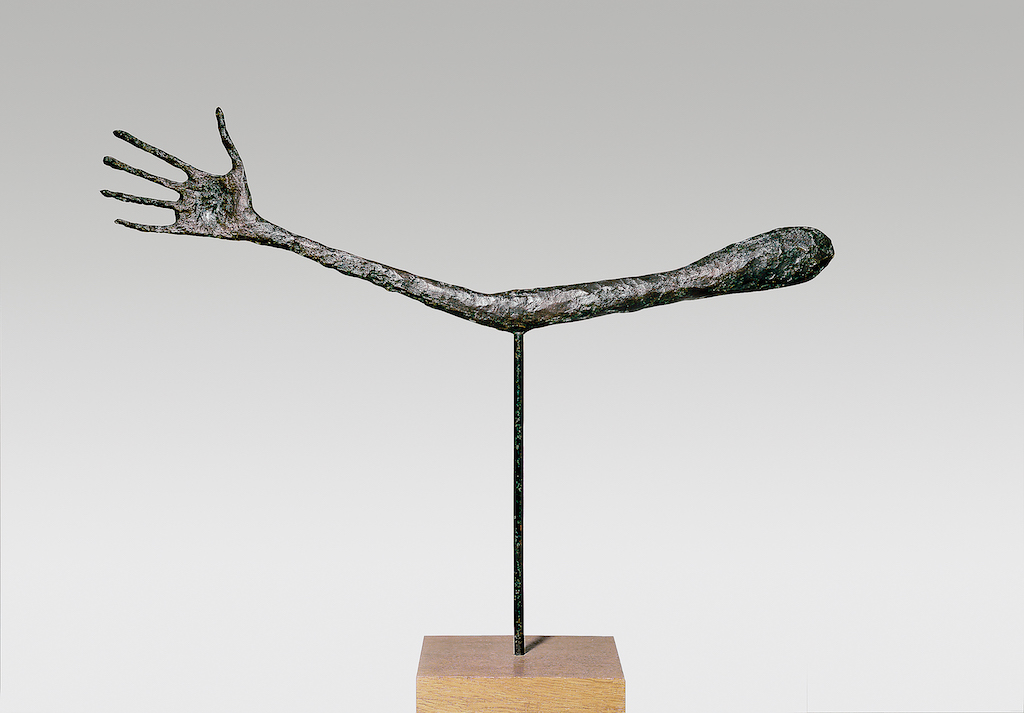


El Lissitzky
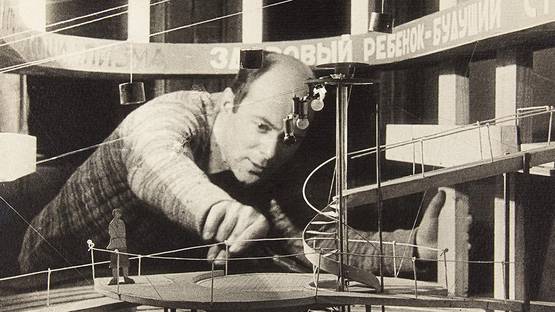


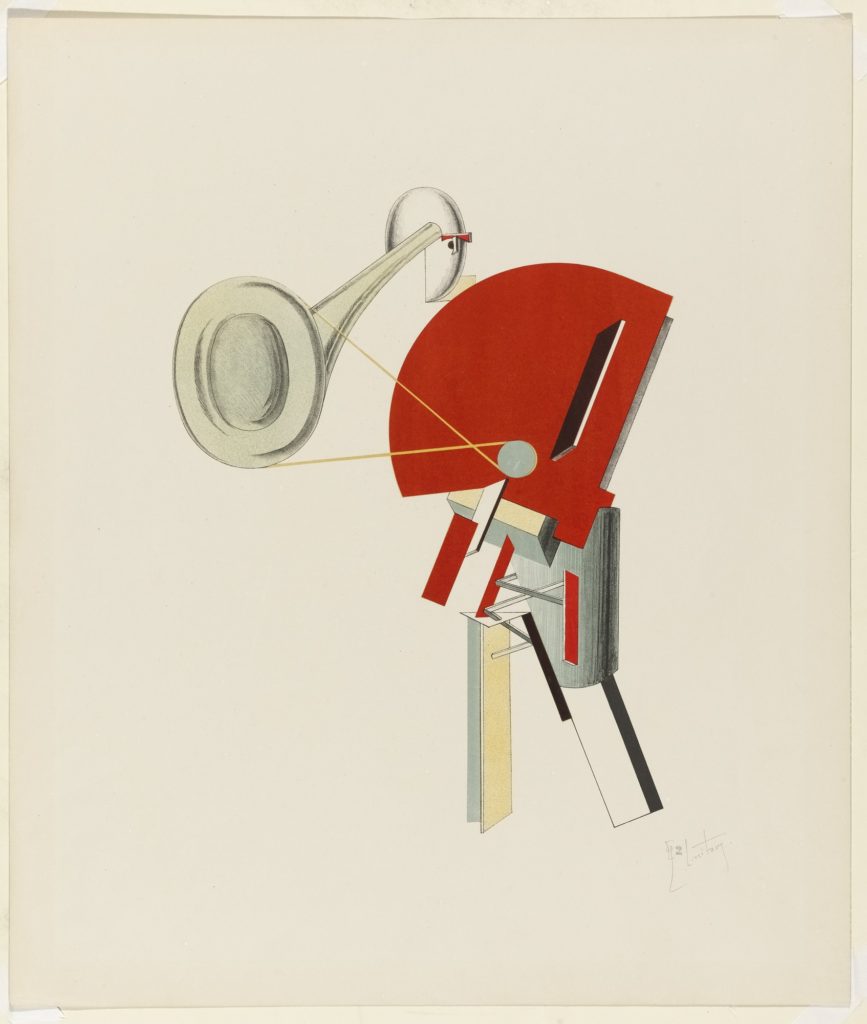
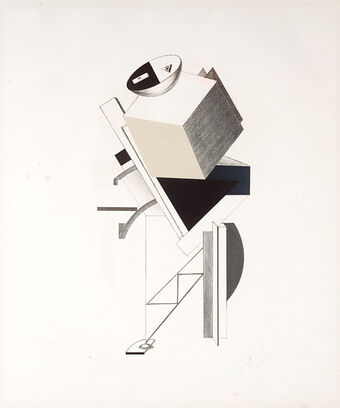

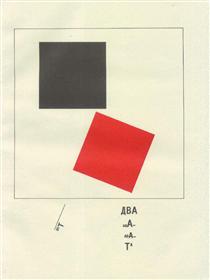

Part of the Show Machinery 1923 El Lissitzky 1890-1941
Jackson Pollock
In 1947 Jackson Pollock arrived at a new mode of working that brought him to his fame. His method consisted of flinging and dripping thinned enamel paint onto an unstretched canvas laid on the floor of his studio. This direct, physical engagement with his materials welcomed gravity, velocity, and improvisation into the artistic process, and allowed line and color to stand alone, functioning entirely independently of form. His works, which came to be known as “drip paintings,” present less a picture than a record of the fluid properties of paint itself.
POST-MODERNISM
This movement was a reaction from ww2 and pop art started to emerge by taking inspiration from mass media.Postmodernism makes references to things outside theart work…e.g. political, cultural, social, historical,psychological issues. It favours the context of a work including examining subject and the reception of the work by its audience. Work from this time period are aware of and make reference to the previously hidden agendas of the art market and its relation to art museums, dealers and critics. Postmodern work often uses different approaches in theconstruction of the work such as…eclecticism,intertextuality, collaboration, pastiche, parody, recycling, reconfiguration, bricolage
Pop Art
Andy Warhol
People’s opinions are torn over whether Pop Art is genius and a creative new idea for the postmodern age, or whether it is a load of rubbish. Others believe that pop art is worth way more that it is worth to look at. Pop art is post modern as it has created a new version of art which is original and new, as well as combining both high art with low art. Andy Warhol’s art work is post modern as it uses bricolage to combine both images and writing within artwork.
Andy Warhol’s most famous pieces are Marilyn Monroe screenprints, deteriating throughout the continueing images in many rows of the piece, as many of Warhol’s work is collages of layers of images. This shows the destruction and breakdown of Marilyn Monroe as her fame and publicity increased. Andy Warhol’s work concentrates on the idea and concept behind his work, rather than the realism which had been dominant in years before Warhol’s work became famous. Where art work is only considered as ‘good art’ when based on a realistic scene. As Warhol was one of the first pop artists to occure, people were shocked yet intrigued at this new upcoming style of art. Andy Warhol blurs the lines between high art and popular culture, as his pop art has both the combination of images and writing, which was new and original at the time. Another key piece within his portfolio is his ‘Campbell’s tin soups as shown below.
Tableaux
“Tableaux is used to describe a painting or photograph in which characters are arranged for picturesque or dramatic effect and appear absorbed and completely unaware of the existence of the viewer. ” – Sarah Jones
Tableaux vivant is French and stands for ‘living picture’, and is a story telling scene containing one or more actors or models. Tableaux photographs are a style of staged photography in which a pictorial narrative is conveyed through a single image or a series of images that makes references to fables, fairytales, myths, unreal and real events from a variety of sources such as paintings, film, theatre, literature and popular media. The models in the photographs are usually told to be: stationary and silent, usually in costume, posing in a certain way, with props and scenery, the setting may also be lit in a certain way in order to make the photo and scene look more dramatic. In order to take good tableaux photography it works well to combine both theatre and the visual arts.French philosopher, Denis Diderot was the first to use ‘Tableau Vivant’ in the eighteenth century to describe paintings with a certain type of composition. Tableau paintings had the effect of walling off the observer from the drama taking place, as well as that they were natural and realistic. In his desire to make paintings that were realistic rather than idealised, Édouard Manet, a French modernist painter, decisively rejected the idea of tableau as suggested by Diderot in the 1860s, but the concept of tableau reached a crisis due to this. He painted his characters facing the viewer with a new vehemence that challenged the beholder. In the 1970s, a group of aspiring young artists such as Jeff Wall and Andreas Gursky began to make large format photographs that resembled paintings, that were designed to hang on a wall. As a result these photographers were obliged to take on the very same issues revealing the continued importance of tableau in contemporary art.

